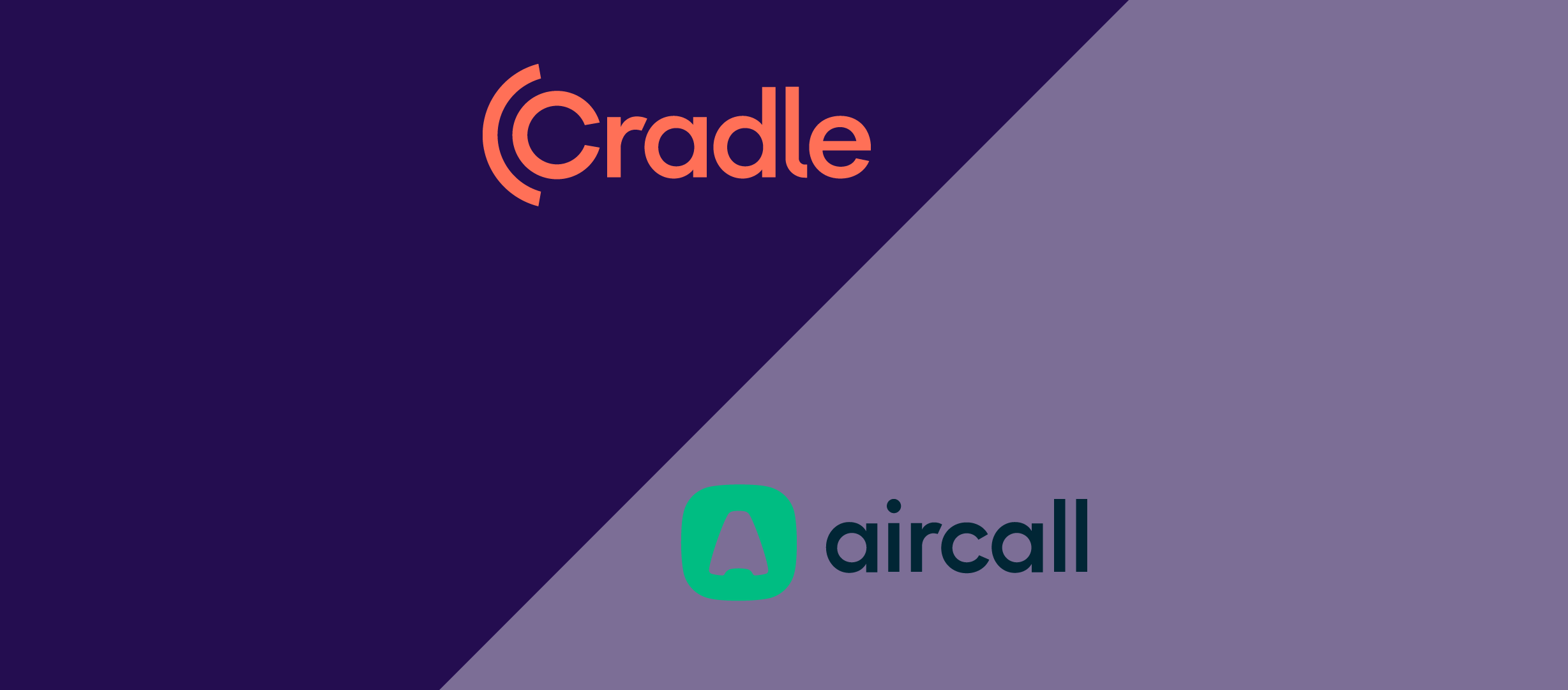Making mobiles work in a modern workforce
Mobile devices were the first major enabler into building flexible or remote workplaces. And… well, that makes sense given their name.
With the abundance of cloud-based apps now available to businesses, the modern workplace has redefined itself. Whether it’s your actual office, the local cafe or in your PJ’s in bed, the definition of a work environment is largely defined by access to two things; internet and quietness.

Like your mobile phone, you can now bring your work tools with you. Here at Cradle, we use exclusively cloud based apps, whether it’s HubSpot for customer management, Xero for accounting and invoicing, Slack for internal communications, Stripe for billing and of course Cradle for calling - the list goes on, and on… and on… we’re currently using around 20 different cloud-based apps to run our business. And the result is that I’m writing this article at Xero’s new community space - Rewired - while my team are in San Francisco and I’m without any barriers to doing my work. It’s magic.
What hasn’t developed well with a changing workplace is how a business phone line can be accessed when your team who serve that number leave the office. When your team leave the office, they largely default to using their mobile devices and their own personal mobile number.
Let’s look at a few of the problems this creates:
- Time is a precious, scarce resource and we should be conscious and intentional with the activities we spend time on. If you provide someone with direct access by handing out your mobile phone number, you lose the ability to work intentionally. Everyone has that needy customer who keeps coming back with queries that are low-value or not relevant to your role within the business. Many modern businesses preach about wanting their staff to have work/life balance. Allowing staff to give out their mobile numbers works in direct conflict of this as your customers can now contact them when it suits them, even after hours or when your team should be enjoying switch-off time or they’re on leave. While this is true for annual leave, it’s especially important to make sure your team have space if they’re on leave related to their health or on bereavement leave.
- Customers needs’ change and you won’t always be the right person to help. If you provide a mobile phone number to a customer, you’re allowing yourself to be accessed throughout the lifecycle of that customer, whether you’re the most qualified person to solve their current issue or not. If you’re no longer the right person to speak to, it’s not a wonderful customer experience when they call up and you have to decline to help, rerouting them to the right team.
- If your customers work with multiple people in your business (common in agencies), they will need many mobile numbers to get the help they want. This means more numbers for your customer to dial and given that their mobile numbers don’t link your employees together, there’s a high chance that customer will hit a voicemail. Not a fun experience!
- When your staff use their personal mobile numbers, you can’t accurately measure how your team are using phones within the business as their phone activity is not contributing to the company phone activity aggregate. You lose the ability to create a baseline in your business from which you can set KPI’s and improve. Would you have your team work off personal email accounts?
- When staff leave your business, customers have built a relationship with them - and their number. Do you want ex-staff in contact with current customers? Most probably not. We’ve written in-depth on this subject here.
- You can’t transfer calls to the right person.

Can it be better? Yes!
This is the part where it seems we’re shamelessly promoting how Cradle works but here’s why we’re talking about it:
- We talk to businesses with these problems all day
- We’re building our product specifically to fix them
How we solve these issues is largely due to how Cradle is built. Cradle has apps that work on your favourite devices - windows or macOS laptops (or desktops) and your iOS or Android devices - which means we can leverage the hardware you already have to make sure that landline or toll free number calls can reach you and the team, wherever you are and on your choice of device.

Here’s how we solve the issues mentioned above:
- One of the easiest ways to delight your customers is to make sure you’re available when they call. That’s not an easy task for a single, busy employee so we leverage a full team to answer those calls. Once the call is answered, either that person in a team can help, or route the call to the right person. Cradle analyses this behaviour so that next time they call your business, there’s a good chance that we’ll try and connect the caller with the team member who has built the strongest relationship, before routing the call to the wider team. This is a good way to help you screen calls in and out.
- With Cradle, you can specify your business hours and decide how you want calls to be treated inside or outside of your standard business hours. Inside business hours, you can choose whether you want calls to reach a specific team or whether you’d like inbound callers to use a voice menu ( press 1 for sales, 2 for support etc). So, this means that you can make sure your employees aren’t receiving calls when you don’t want them to.
- As we mentioned above, if you’re constantly declining or forwarding calls from a customer (which isn’t a bad thing - they just go to your team), we note this behaviour so that we can change how we will route that call through your team so that they’re skipping you, and getting the employee in your business who can provide them the right support and own their relationship going forward.
- One number to rule them all! Roles allow you to group your employees so that a client can have a single number to reach a specific group of people who manage that customer. You can even order those team members in the order in which that call should be answered. This is a really great way to have junior staff as the frontline to answer calls and keep staff working on higher-value work, remaining focused.
- We provide easily-consumed but detailed usage metrics on how phones are being used within your business. Which staff member is calling the most? When do you receive the most calls through a business day? Total talking time? These are good numbers to have to help with internal training and understanding how you’re interfacing with your customers.
- If a staff member leaves your business, simply remove them from your Cradle account and they won’t be able to receive any further calls to your work numbers. This puts you in control of your customers and removes any risk from disgruntled ex-employees, or employees who could benefit from continuing relationships with your customers.
- If you need to forward a call from your mobile, it isn’t very easy. Usually, you’d just suggest that the customer tries the person they’re after directly or you fumble with the call while trying to find the number. With Cradle, you can see which of your team are available or unavailable and then call them. While your original call is waiting, you can forward the call to the person they’re after, or you can speak with that team mate first to brace them for the incoming call. Easy!
So, it can be so much easier. If you’re interested in speaking about whether Cradle is right for you, let’s chat.
Share this
You May Also Like
These Related Stories

Grow sales and cut costs by moving your phone system to the cloud

The best calling tools for your Hubspot Sales-Hub based sales team.
